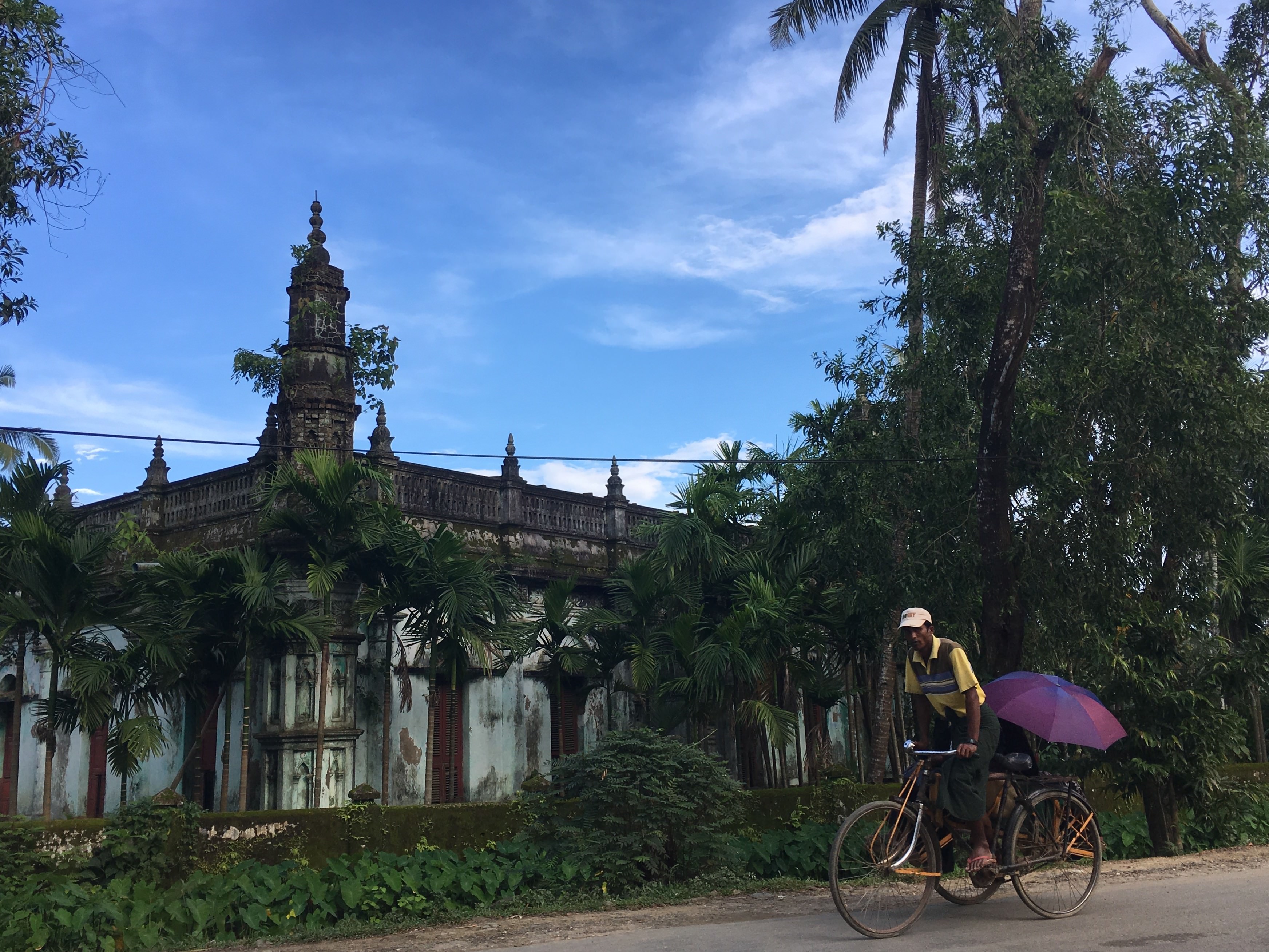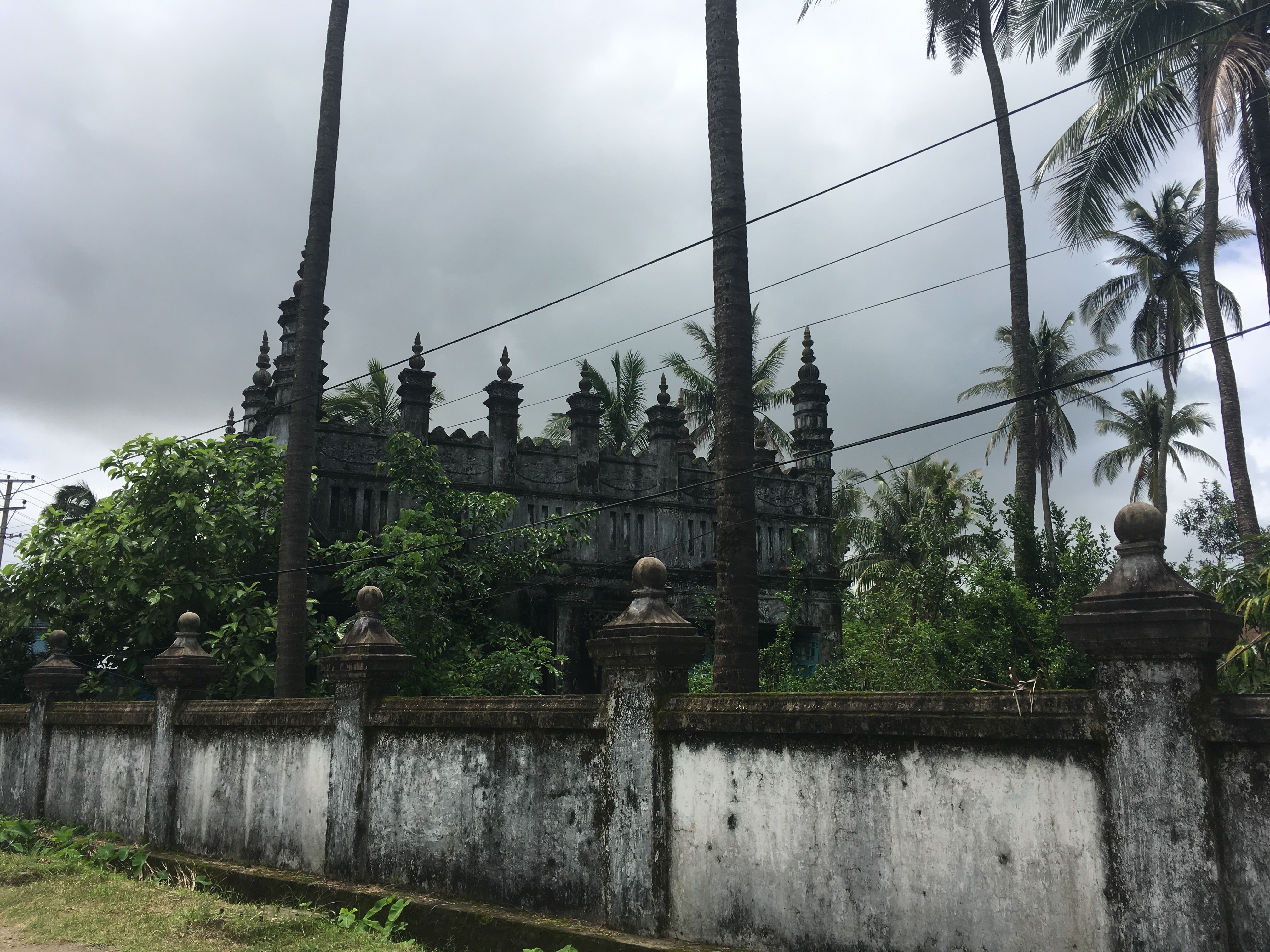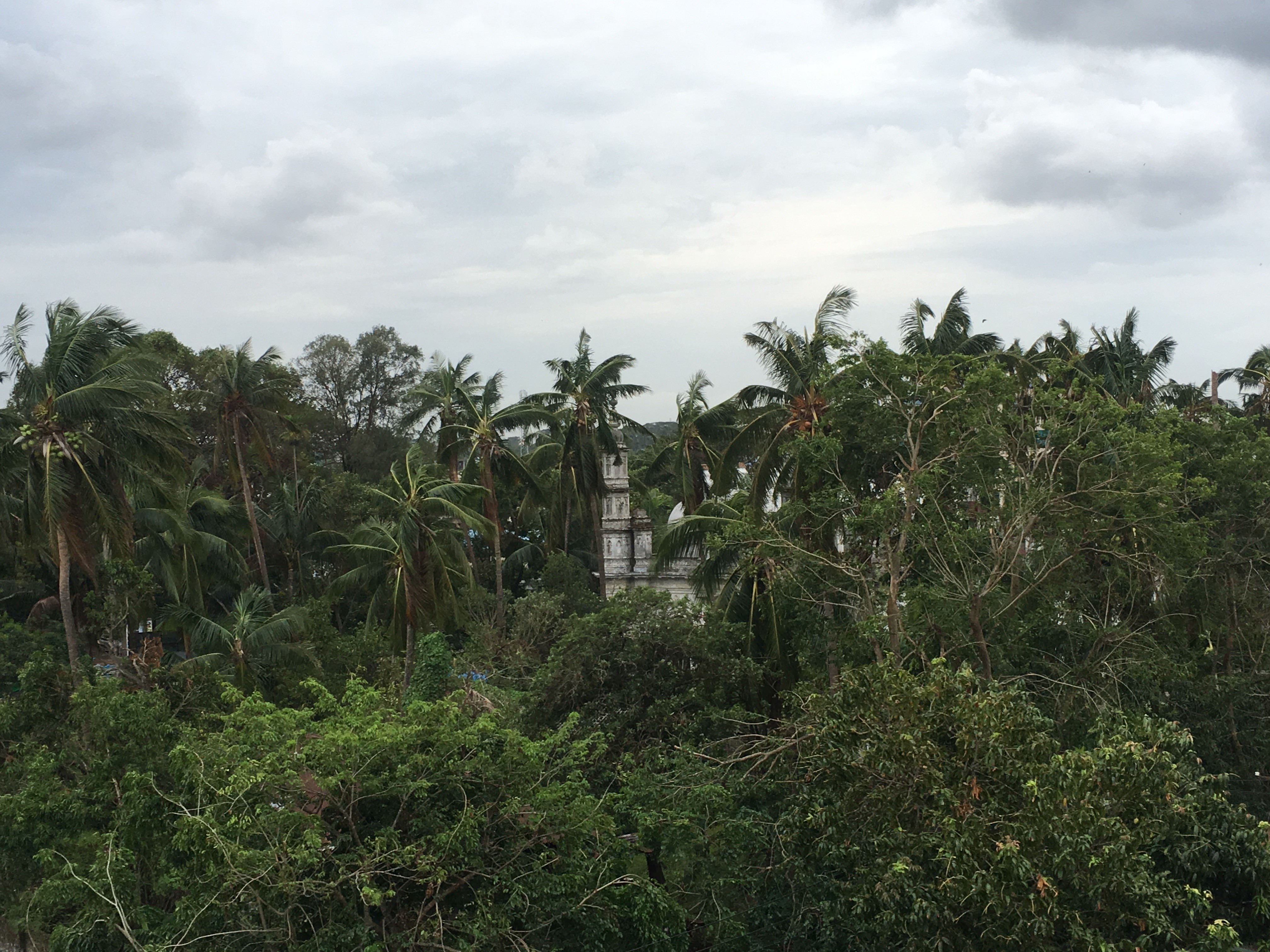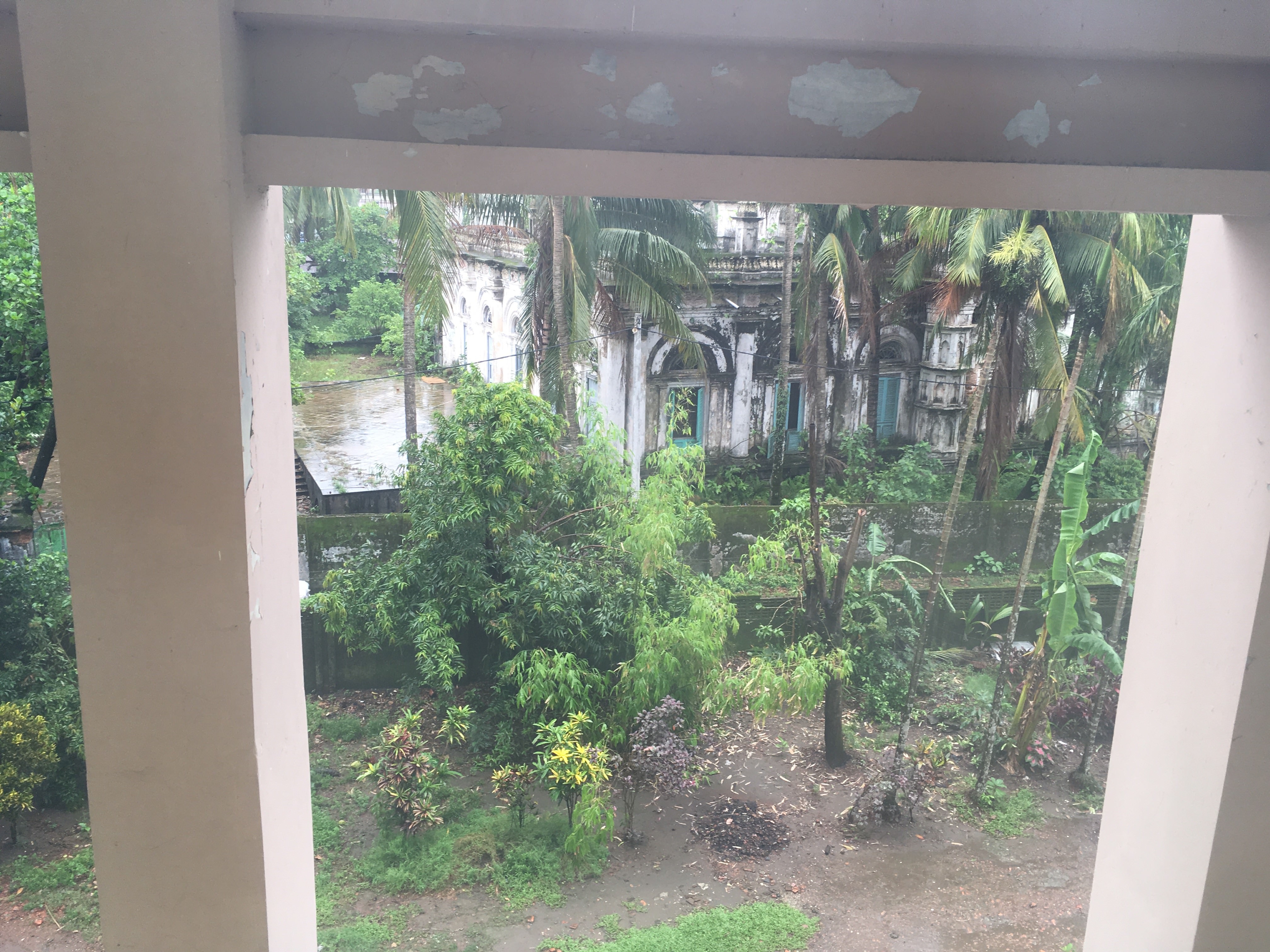
A mosque in Buthidaung, Northern Rakhine State that was condemned following the 2012 conflict. Photo: Cresa Pugh.
By: Cresa Pugh, Doctoral Student in Sociology & Social Policy, Harvard University
“You can look, but you can’t take a photo.” I was standing on the main street of downtown Sittwe, the capital of Rakhine State, on the westernmost edge of Myanmar. To my left was a street vendor selling papaya and mangosteen; ahead of me was a dense urban jungle of palm trees and thicket, and between us stood a uniformed military official, with an AK-47 draped over his shoulder, leaning against a pile of sandbags and a tangle of barbed wire and plywood. Rising above the trees were the weathered remnants of the minarets of Sittwe’s oldest mosque, Sawduro Bor Masjid, which was destroyed in riots that swept the city more than five years ago.
In 2012, longstanding tensions between the Buddhist and Muslim communities in the region erupted into a bloody conflict that claimed the lives of hundreds of individuals and led to the forcible displacement of all Muslims into militarized camps in and around the city. Prior to 2012, Sittwe was home to 73,000 Muslims–nearly half the population of the city–yet today there are virtually no Muslims remaining, save those confined to the camps who are not allowed to leave the premises.
During the conflict, most of the mosques in Rakhine were burned, vandalized or razed to the ground by mobs of anti-Muslim Buddhist nationalists who fear what they perceive to be a rapidly expanding and increasingly dangerous foreign element. While the Rohingya, an ethnic and religious minority group, claim indigeneity to the region and may have roots dating back to the 700 AD, the population has been increasingly marginalized and persecuted on the basis that they are ‘illegal’ South Asian immigrants. Most recently a violent military crackdown in response to a Rohingya insurgent attack led to the killing of hundreds of individuals and the mass displacement of more than 600,000 Rohingyas across the Bangladesh border where they still await repatriation or settlement.
Today in Sittwe, the only reminders that there was ever a Muslim community in the city are the shells of ancient mosques dotted across the landscape. Since 2012, all mosques in Rakhine State have been permanently shuttered, many of which are under heavy protection by military personnel in order to prevent individuals from entering to worship or commit further vandalization. Now overrun by monsoon-fed mangrove forests, the structures stand in defiance of a society that has, over several decades, attempted the erasure of its Muslim population. While the mosques remind us of the existence of this community, their charred, crumbling, dilapidated character speaks to the violence exercised upon those who worshipped, learned and communed within their walls.

A mosque in Sittwe, Rakhine State that was torched and destroyed in the 2012 conflict. Photo: Cresa Pugh.
In January 2017, I received a grant from the South Asia Institute to begin my research in Rakhine and returned in June 2017 to conduct interviews in the Rohingya and Rakhine communities. I gained access to the military encampments and spoke with Rohingya individuals and families who had been displaced during the 2012 riots.
I arrived at the camp on June 26, which happened to be Eid al-Fitr, and was greeted by men with machine guns, but also by young girls in purple velvet dresses with bows in their hair, men in suits and crisp button-downs, and women in floor-length satin outfits bedazzled with jewels–all celebrating the holiest day on the Muslim calendar, a subtle act of resistance to a state and society that has stripped them of their humanity.
Asking what they missed the most about their home in Sittwe, many of them said freedom of movement, economic and educational opportunities, and freedom of worship. A makeshift building made of thatch and corrugated metal–similar to the structures that serve as homes where families sleep on bamboo mats atop mud floors–within the camps function as a mosque. Only men are allowed to enter–the women must pray at home. The mosque is bare and hostile; it is not a space for social communion, and my informants spoke with a heaviness about their mosques in Sittwe which had been destroyed, with only memories remaining.
In 2012, 17 mosques were demolished in the riots and since then, Rakhine’s security and border affairs minister has called for the destruction of the remaining mosques and madrasas (religious schools) built after 1962. Mosques are more than simply houses of worship and represent more than the symbolic, religious and spiritual elements of Islam. They constitute the social, cultural and political life of adherents to the faith, thus the destruction of a mosque is an assault on the very fabric of a community, the collective memory of a people. And the rampant destruction of mosques across an entire city and state–and the charred rubble, or mere emptiness, that lies in its place–stands as a testament to the attempted systematic erasure of a practice, a culture, and a people.

Sawduro Bor Masjid mosque in downtown Sittwe, Rakhine State that was vandalized during the 2012 conflict and later condemned. Photo: Cresa Pugh.
As I gazed up toward the minarets of Sawduro Bor Masjid, I removed my phone from my bag and started to aim it upward, but I was told by a friend that it was against the law to take photos of the destroyed mosques. As he whispered this to me, the armed guard stared blankly in my direction. Were the officials nervous that a journalist might document the mosque destruction as evidence of religious persecution that would tarnish the state’s image? Is the fear that I might be too curious about a population that has been deemed the enemy? I spent the next several days searching for places from which it would be safe to photograph the decaying mosques, the ghosts of the displaced worshippers looming present.
On my final night in Sittwe, I met a friend for dinner at a teashop that was opposite a mosque slowly being reclaimed by the jungle. We were greeted by an overweight dog. My friend reminded me of an interview we had conducted several days prior with a Muslim community leader being held in a nearby military camp who told us about having to flee his home in the middle of the night during the 2012 riots. My friend explained that the dog in the shop belonged to this man, and the owner of the shop, who was Buddhist Rakhine, began looking after the dog once his owner was detained. The shop owner explained that she maintained a strict halal diet for the dog because she knew his owner did not eat pork. My friend and I seasoned our rice with ‘kalar lay,’ an Indian spice named after the racial slur used for Myanmar’s Muslims. My friend tells me that only Muslim dogs bark at night because they miss their owners and that many of the dogs left behind after the conflict now sleep in the mosques, waiting.

A photo of Sawduro Bor Masjid in downtown Sittwe, Rakhine State taken from inside the Rakhaing State Cultural Museum. Photo: Cresa Pugh.
